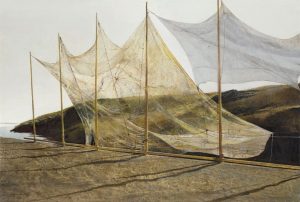I (Tara) had the opportunity to sit with the passage in Acts 2 with a group of friends recently. Pentecost is almost upon us at the writing of these words, and my friends and I gathered across continents to consider the story of the Spirit that continues to blow into all of our lives even now. There were so many things that came out of that time of meditation, rumination, and contemplation together (which is the key part of the process that so many of us moderns tend to lose), but one that personally spoke is a word that occurs in Acts 2:2.
ἦχος
ēchos
a sound
May I first say there is so much nuance and particular experience behind my response to this word. On face value, English speakers can be forgiven for seeing our word echo, and making all sorts of connections to the way earth echoes heaven. But ēchos (pronounced more like eck-hahs) doesn’t mean a sonic reverberation that passes sound back to you. Instead, it means a sound that is “spoken of the roar of the sea waves.”
There is so much here to sit with, and so much that I’d like to tell you about my own story with the sea. Instead of that, though, I would like to offer you an image to meditate on. Something that will allow the sound of the sea waves to come alive for you. And maybe as that sound enlivens your ears, you, too, will find yourself in that Upper Room on Pentecost, surrounded by the Spirit.

Like A Wind
There’s a spiritual presence in Andrew Wyeth’s Pentecost painting, which shows two tattered fishing nets hanging out to dry on a gray New England day, billowing in the wind like sails. Wyeth said the spirit he sensed in the nets was that of a young girl who had drowned at sea. But surely the title invites associations with the divine as well.
Pentecost was painted on Allen Island, a former fishing outpost about five miles off the coast of Maine that Wyeth’s wife, Betsy, purchased in 1979. The painting’s title likely originated with Betsy, who titled most of Wyeth’s works, with his consent. She said the island was originally called Pentecost Island, a name bestowed by the English explorer George Weymouth upon his first landfall in the New World on Pentecost Sunday, 1605.

